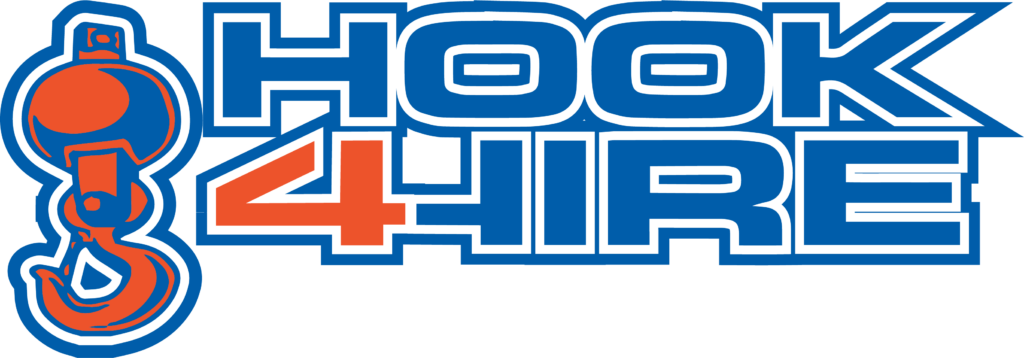Mobile crane safety is of paramount importance in the construction, heavy lifting, and related industries. Strict adherence to safety standards and best practices is vital to preventing accidents, equipment failures, and project delays.
At Hook4Hire, we are dedicated to providing modern mobile crane services that meet the highest safety standards in the industry, and we believe in sharing our knowledge to help professionals improve safety practices in their respective work environments.
In this blog, we will dive into the essential safety standards and best practices for mobile crane operations, exploring topics such as load chart reading, communication protocols, pre-lift inspections, ground and environmental conditions, and operator training. Our goal is to equip construction professionals with a fundamental understanding of the safety considerations associated with mobile crane usage, enabling them to create and maintain a safer work environment and execute successful lifting operations.
Reading and Understanding Load Charts
Load charts are essential documents that provide crucial information about a mobile crane’s lifting capacity, limitations, and configuration requirements. Accurate interpretation and use of load charts can help ensure that the crane is operated within its safe working limits, preventing accidents, equipment damage, and project delays. Some key factors to consider when reading a load chart include:
– Maximum Load Capacity: Load charts provide information about a crane’s maximum lifting capacity at different boom lengths, angles, and configurations. Operators should ensure that they do not exceed the crane’s maximum capacity for any given lift and stay within the indicated safe operating range.
– Boom Length and Angle: Load charts indicate the lifting capacities of a crane with its boom at various lengths and angles. By understanding the relationship between these factors, operators can adjust the boom accordingly to meet the project’s specific lifting requirements.
– Outrigger Configuration: Load charts may outline specific outrigger configurations required for safe operation at certain capacities or configurations. Ensuring that the crane’s outriggers are properly extended and set is essential to maintaining stability during lifting operations.
– Counterweight Requirements: Some mobile cranes require counterweights to maintain stability and safe lifting capacities, and load charts typically indicate the necessary counterweights for different configurations.
Pre-Lift Inspections and Ground Conditions
Performing thorough pre-lift inspections and evaluating ground conditions can help prevent accidents and equipment failures during mobile crane operations. Key steps to take during pre-lift inspections include:
– Inspect the Crane: Check all mechanical components, control systems, and safety devices, such as brakes, alarms, and limit switches, for proper function and signs of wear or damage.
– Inspect Rigging Equipment: Rigging equipment, including slings, shackles, and hooks, should be inspected for damage, wear, and compliance with load requirements.
– Evaluate Ground Conditions: Assess the ground conditions and ensure that they meet the necessary requirements for stable crane operation, such as soil compaction, surface flatness, and adequate space for outriggers. Make sure there are no underground utilities or voids that could compromise the crane’s stability.
– Crane Setup: Ensure the crane is properly set up according to the manufacturer’s guidelines and load chart specifications before commencing lifting operations.
Communication Protocols and Signaling
Effective communication is vital in maintaining a safe working environment during mobile crane operations. All team members, including crane operators, riggers, and spotters, need to understand and utilize established communication protocols and signals to coordinate their efforts and avoid miscommunications that could lead to accidents. Key elements of effective communication in crane operations include:
– Hand Signals: Standard hand signals should be used to communicate essential instructions between the operator and those on the ground throughout the lifting operation.
– Radio Communication: Two-way radios can be instrumental in maintaining clear communication between team members, especially when line-of-sight is obstructed.
– Designated Signal Person: A qualified signal person should be assigned to direct and communicate with the crane operator, ensuring the relay of accurate and timely information to avoid accidents and miscommunications.
Operator Training and Certification
Proper training and certification for crane operators are essential components of ensuring safety during mobile crane operations. Operators should possess in-depth knowledge of crane mechanics, rigging practices, and safety protocols, in addition to hands-on experience and problem-solving abilities. Industry-required training and certification programs provide operators with the knowledge and skills necessary to successfully manage the inherent risks of crane operations.
In the United States, the Occupational Safety and Health Administration (OSHA) requires that crane operators be certified by a recognized accrediting organization. Additionally, some states and localities may have their own specific certification requirements. Employers are responsible for ensuring that their crane operators meet all necessary certification and training standards and possess the experience required to competently and safely operate mobile cranes.
Embracing a Culture of Mobile Crane Safety
Understanding and implementing mobile crane safety standards and best practices is critical to the success and safety of any heavy-lifting project. By focusing on load chart comprehension, pre-lift inspections, effective communication, and operator training, industry professionals can create a safer work environment that reduces the risk of accidents, equipment failures, and project delays.
At Hook4Hire, we are committed to providing mobile crane services that meet the highest safety standards in the industry. By sharing our knowledge and expertise, we hope to contribute to a culture of safety and hazard prevention, enabling construction professionals to execute successful mobile crane operations with confidence. Contact us today for a discussion with our crane rental company in Owensboro!
